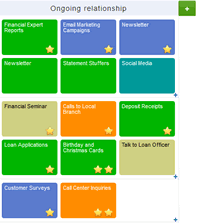Integrated marketing is about the customer and his overall experience first.
Integrated marketing is the way forward for all customer-centric organizations. The customer journey is more connected than ever and the customer experience regains its’ deserved status. It seems customer-centricity becomes more than the vague promise from the early days of CRM.
The traditional integrated marketing view mainly looked at the integration of channels, tactics and the reinforcement of campaigns. However, the main reason why integrated marketing deserves more attention should not be about your campaigns and marketing efforts themselves in the first place. It’s not about you, it’s about the customer experience, the focal point of all optimization efforts.
Reversing the view from campaign to customer experience
Many marketers still look at integrated marketing from the campaign, message and cross-channel optimization perspective too often. The organizational context, beyond marketing, is often forgotten and most of all the customer as the center of all attention is overlooked. Some ask if we really need that integrated approach and famous unified or single view, again from the marketing perspective itself. The answer is ‘yes’ but not just for the sake of marketing efficiency.
The key reason why integrated marketing and a connected approach matters is not cross-fertilization of campaigns or message reinforcement. It’s the customer experience and what customers want from us. I’m not even talking about the (sometimes clear, sometimes less clear) demand for personalized services, content, experiences and/or messages by customers. I’m mainly talking about the fact the customer does not care about the way we organize our businesses, marketing and tactics and expects different things as you’ll read below.
In reality, we shouldn’t optimize for media, channels or tactics in the first place. We optimize for the customer experience so marketing/business optimization and the customer experience go hand in hand. When we optimize we have to think about the customer experience and journey, understand it and act upon it. When we look at marketing from the customer perspective, we can’t but do better and optimize.

When putting the customer and his journey first, the customer experience becomes the focal point of everything we do as marketers. And it’s not just about marketing. It’s about all customer-facing processes and functions, including social CRM and customer service. In the truly connected business it’s also the case in business and management where the customer can, for instance, be the employee.
The customer experience can be defined as the sum of all touches (across many touchpoints) a customer – in the broadest and most connected sense – has with a business/brand across the overall life cycle and journey. When you work with touchpoints it’s important to realize that 1) it requires some thorough thinking and a clear focus on the customer journey and buyers and 2) it’s not always that easy. To avoid confusion also note that most people talk about interactions and contact moments on the level of channels or real-life contacts (e.g. the branch of a bank). However, others – including me – look at touchpoints as the actual contact itself rather than the channels.
Here are some of the main reason why an integrated marketing approach and single customer view is necessary and a connected and cross-
More on the optimization of the digital and social customer experience.

